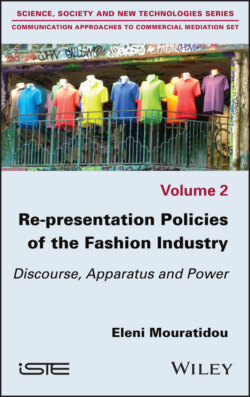Читать книгу Re-presentation Policies of the Fashion Industry - Eleni Mouratidou - Страница 18
I.8.2. Socioeconomic approach
ОглавлениеThe need for a discussion between semiotic approaches and the socioeconomic stakes of the creative and cultural industries arises from the observation that “the processual and historical approach that triumphs in industrial society does not entirely erase the importance of a theory of representation, i.e. the link between signs and human and social realities. It merely covers it” (Jeanneret 2008, p. 521, author’s translation).
While a socioeconomic analysis of the cultural and creative industries can shed light on the organizational and economic dimension of industrial industries and sectors as well as the practices and social transformations that result from them, it can also be seen as a search for the symbolic issues associated with the industries and sectors studied (Bouquillion et al. 2013).
Socioeconomic analysis is mobilized with the aim of grasping the perspectives that characterize what economists Barrère and Santagata (2005) call the “market models” (p. 91) that have replaced the “aristocratic model” (p. 84) of fashion. This socioeconomic transformation is notably governed by “a strategy of dual positioning [set up with] the control of firms by a few powerful industrial and financial groups” (Bouquillion et al. 2013, p. 112, author’s translation). It therefore appears necessary to “examine what the analysis using models makes us understand about the functioning of the sectors, their organization and the major values they convey” (Bouquillion et al. 2013, p. 153, author’s translation). Finally, socioeconomic analysis is also called upon to account for the way in which certain re-presentational policies of the fashion industry borrow models traditionally theorized within the framework of cultural or media industries. This research uses as much socioeconomic data advanced by scientific literature that addresses fashion as a creative industry or that deals more broadly with the cultural and communication industries as it does data from the activity reports of luxury fashion industry groups or data advertised in the specialized or general press.
